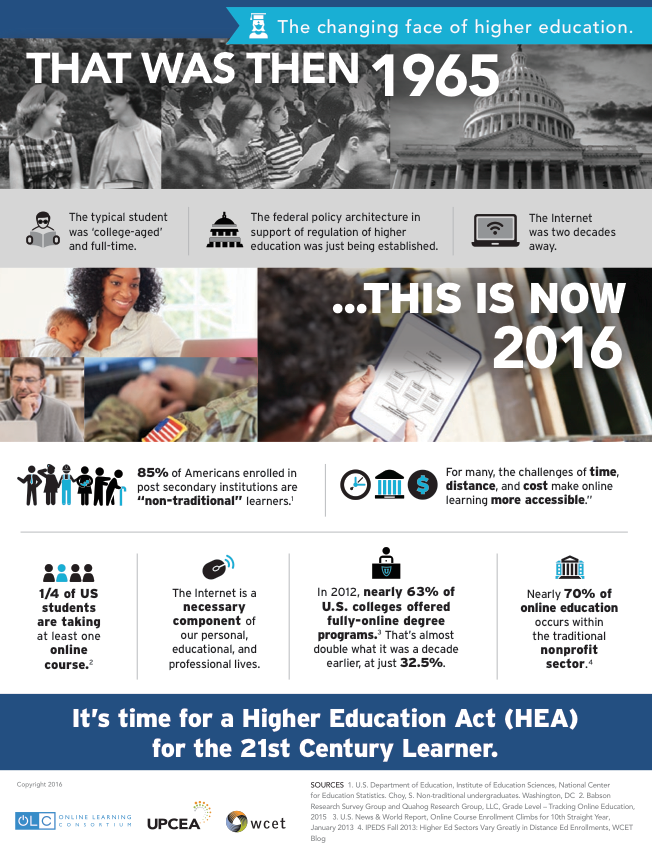Contemporary learners, maybe your institution refers to them as non-traditional learners or post-traditional learners, but they represent 85 percent of today’s higher education learners according to the U.S. Department of Education. Whatever term is used, I’m sure they are learners you serve on your campus – working adults, single parents, military personnel and their families, veterans, caregivers, farm families, and others. For them, classroom-based learning creates enormous challenges of time, access, and cost. Yet, the current higher education system, which was established over 50 years ago, when the typical student was ‘college-aged’ and full-time, is out of step with 21st Century learners.
Last fall, with a keen eye on Congress and the looming reauthorization of the Higher Education Act (HEA), we told you about an advocacy coalition we had formed with UPCEA and DC law firm Cooley LLP to advance the interests of contemporary learners. WCET has joined our efforts, and, together, our three organizations represent more than 1,000 higher education institutions throughout the United States, whose members have long been leaders in the innovative use of technologies to increase access and improve educational outcomes.
This week, we’re bringing our combined voices to the HEA discussion, offering guiding principles for Congress to consider when reviewing current laws and regulations in the use of educational technologies, either at a distance or in the traditional classroom:
- Fairness. Provide equal access to Federal financial aid for students learning at a distance or via innovative methods (including but not limited to competency-based education and adaptive learning) as for “traditional” students.
- Innovation. Rules grounded in the traditional classroom hinder advancements. Since innovations will continue to emerge among higher education institutions, consider authorizing particular innovations in the HEA itself and allow greater flexibility in statute for the Department of Education to waive rules or conduct further “experimental” or “demonstration” projects to help incubate future innovations.
- Accountability. Holding colleges to standards for student performance and protection of financial aid funds need not add to the burden of over-regulation. This balanced approach to any new laws and regulations should be narrowly tailored to address specific needs.
Read more about our efforts in today’s press release and the accompanying guiding principles and infographic, which we are sharing directly with legislative contacts. The infographic (below) illustrates 50-plus years of evolution in higher education (1965 through 2016), compelling the need to evolve the Higher Education Act for the 21st Century learner.
We will continue to update you on our HEA initiatives and encourage your feedback and ideas for championing the needs of contemporary learners in the months ahead.


